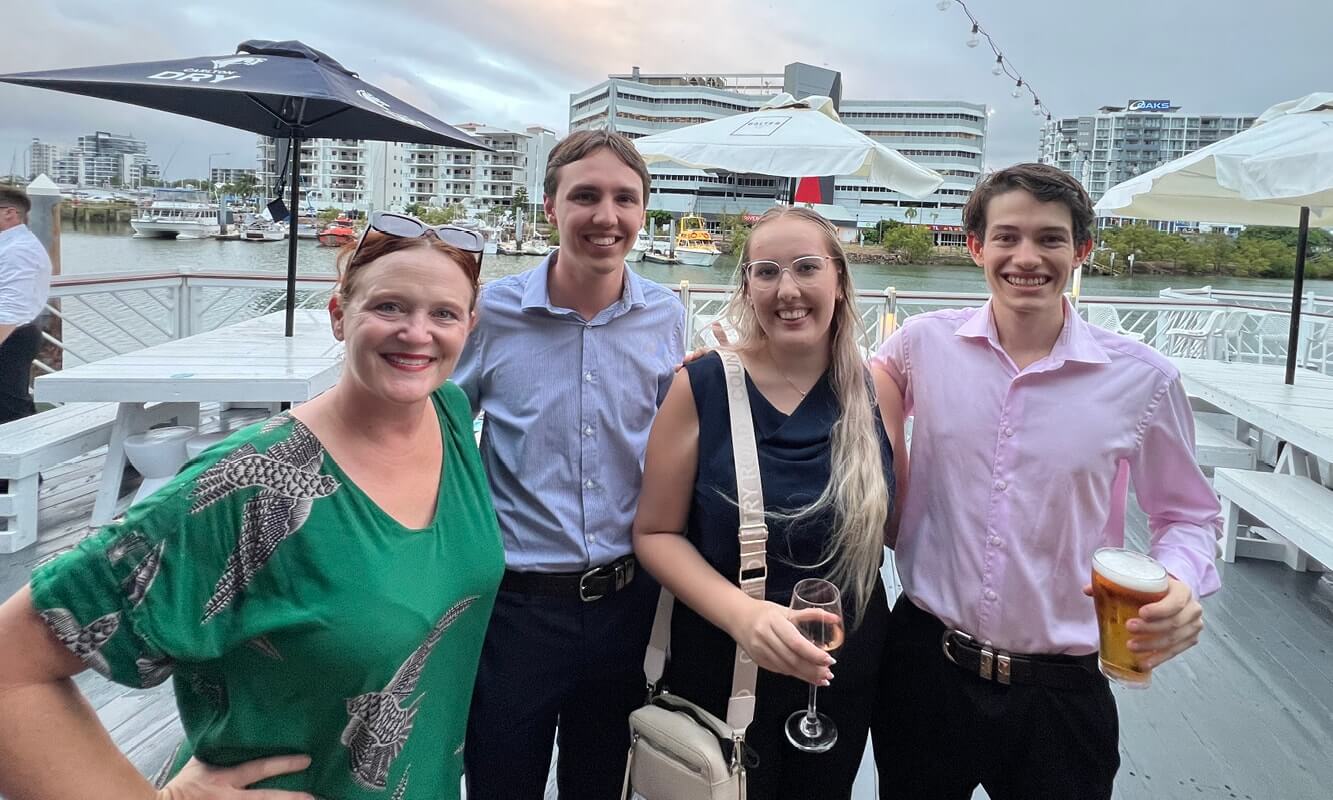The COVID-19 pandemic has both reinforced and exacerbated existing gender inequalities.
Globally, the pandemic has had a disproportionate impact on women, who continue to bear the brunt of the crisis.1
Restricted movements forced Australians to rethink the nature, extent and burden of those who predominantly engage in unpaid work. The need to work more flexibly simultaneously created new and additional caring obligations and increased pressure on frontline service providers.
Women are disproportionately represented on the frontline of the COVID response – in 2018-19, women represented 78.2% of the health care and social assistance industries, and 71.9% of the education and training industry.2
Research consistently confirms women also undertake significantly more unpaid work. During the pandemic, the exponential increase in unpaid child-care and domestic work landed in the laps of women worldwide.3
The Federal Government’s ‘Early Childhood Education and Care Relief Package’,4 an estimated $600 million in support,5 was welcomed as an urgent measure to ensure the survival of the childcare sector. However, a dramatic drop in enrolments demonstrated the financial strain felt by families in accessing childcare.
Even prior to the pandemic, childcare costs have been shown to be a major barrier for carers (of which 97% are women)6 who wish to re-enter the workface after having children. Furthermore, childcare workers are some of the most underpaid in the country, receiving on average $21 an hour, half the average hourly wage in Australia.7
On 12 July 2020, the Australian Government ended the Early Childhood Education and Care Relief Package, and parents recommenced paying former childcare rates.8 The return to paying for childcare has been unaffordable for many families.9
A survey conducted in June 2020 showed that 60% of households would be unable to meet full childcare fees, meaning many parents would be forced to reduce paid work hours.10
A third of parents said they would have to reduce the days their children were in care or remove them from childcare altogether.11 Many women have ceased working to care for their children instead of continuing to use childcare due to the high costs.12
At the same time, women who work in the childcare sector became ineligible for JobKeeper payments and without work shifts, due to parents being unable to afford the care.13
Domestic and family violence
Social isolation measures have been implemented at various times throughout the COVID-19 pandemic, to limit the spread of the virus.
Restricting the ability to leave the home, in effect, increased risk for people experiencing domestic and family violence. The restrictions not only increased the amount of time a victim was compelled to stay at home with their perpetrator, but also reduced interaction with the community more broadly, which may have served as a means for accessing support and safety.
In many countries, including Australia, there continues to be a significant increase in demand for domestic violence services, as well as by increased reports of affected children not attending schools.14 Isolation, paired with the psychological and economic stressors emphasised by the pandemic, along with increases in negative coping mechanisms, generated an unprecedented wave of family violence.15
Google searches for domestic abuse support increased by 75% during the first months of lockdown.16 A survey conducted by the Australian Institute of Criminology found that, between February and May of 2020, one in 10 women experienced domestic violence during lockdown in the form of emotionally abusive, harassing or controlling behaviour.17
Australian organisations which provide support services to those affected by domestic violence have reported a surge in cases where partners are using COVID-19 restrictions as a mechanism to manipulate and control their partners.18 For example, perpetrators exert further control through containment, fear and threat of contagion as a mechanism of abuse; some have reportedly used misinformation about the extent of quarantine measures to control their partners’ movement.19
The reluctance already experienced by victims in reporting violence, for fear the threat will escalate, has been exacerbated in circumstances where the opportunities to escape and be protected from the perpetrator are reduced.20 This leaves a significant gap in reportable data, and has the potential to contribute to existing insufficient funding and government support.
A recent study which surveyed 15,000 Australian women found that 8.8% of respondents reported experiencing physical or sexual violence by a current or former cohabiting partner in the last 12 months.21
The same study found that 66.7% of women reported they had experienced more than one form of emotionally abusive, harassing or controlling behaviour in the three months prior to the survey (conducted between 6 May and 1 June 2020).
One third reported that this was the first time (during COVID) that their partner had been violent or manipulative towards them.22 In 2020 alone, at least 55 women died in Australia from some form of domestic violence – it was named the ‘worst year’ by those who have been in the sector for many years.23
The Queensland Government recently announced a wide-ranging review into the experience of women across the criminal justice system to be undertaken by the Women’s Safety and Justice Taskforce.
Among other things, the taskforce will make recommendations on how to best legislate against coercive control as a form of domestic and family violence and the need for a new offence of “commit domestic violence”.24
The increased conversation on domestic and family violence, and coercive control in particular, is a welcome step.
Anke Joubert is a Legal Assistant on the QLS policy team. This article was prepared under the supervision of Senior Policy Solicitor Natalie De Campo.
Footnotes
1 United Nations 2020, ‘United Nations Comprehensive Response to COVID-19: Saving lives, Protecting Societies, Recovering Better’, un.org/sites/un2.un.org/files/un-comprehensive-response-to-covid-19.pdf.
2 abs.gov.au/statistics/people/people-and-communities/gender-indicators-australia/latest-release#:~:text=In%202018%E2%80%9319%2C%20the%20industries,and%20mining%20(84.1%25)%20industries.
3 Ibid.
4 Prime Minister of Australia, ‘Early Childhood Education and Care Relief Package’, pm.gov.au/media/early-childhood-education-and-care-relief-package.
5 Jason Roberts, ‘Unpacking the new ECEC Relief Package – What does it mean for your service?’ The Sector, 2 April 2020, thesector.com.au/2020/04/02/unpacking-the-new-ecec-relief-package-what-does-it-mean-for-your-centre/.
6 Women’s Agenda, ‘97% of childcare workers are female, but gender inequality not an issue, womensagenda.com.au/uncategorised/gender-inequality-not-an-issue-despite-97-of-childcare-workers-are-female/.
7 Ibid.
8 Jordan Hayne, ‘Free child care to end in July after Minister says it did its job during coronavirus’ abc.net.au/news/2020-06-08/free-childcare-coronavirus-support-to-end-july/12332066.
9 Michael Atkin, ‘Return to childcare fees may be unaffordable for some families, research shows’ ABC News 17 June 2020, abc.net.au/news/2020-06-17/childcare-fee-return-unaffordable-for-some-parents/12362072.
10 Conor Duffy, Brad Ryan and Loretta Florance, ‘Parents and childcare works back to ‘square one’ as they grapple with Government changes’ ABC News 9 June 2020, abc.net.au/news/2020-06-09/free-child-care-to-end-dan-tehan-announcement-parents/12301520.
11 Ibid.
12 Ibid.
13 Above (n8).
14 Kim Usher et al, ‘Family violence and COVID-19: Increased vulnerability and reduced options for support’ 2020 International Journal of mental health nursing 29(4) p549-552.
15 Ibid.
16 Ibid.
17 Amy Dale, ‘Criminalising Coercion’ September 2020, lsj.com.au/articles/criminalising-coercion/#:~:text=%E2%80%9CWith%20coercive%20control%2C%20we%20must,to%20live%20a%20full%20life.
18 Ibid.
19 Above (n14).
20 Hayley Boxall et al, ‘The prevalence of domestic violence among women during the COVID-19 pandemic’ Australasian Policing 2020 12(3) p38-46.
21 Ibid.
22 Ibid.
23 Else Kennedy, ‘The worst year: domestic violence soars in Australia during COVID-19’ The Guardian 1 December 2020, theguardian.com/society/2020/dec/01/the-worst-year-domestic-violence-soars-in-australia-during-covid-19.
24 Department of Justice and Attorney-General, ‘Women’s Safety and Justice Taskforce’, justice.qld.gov.au/initiatives/womens-safety-and-justice-taskforce.














Share this article